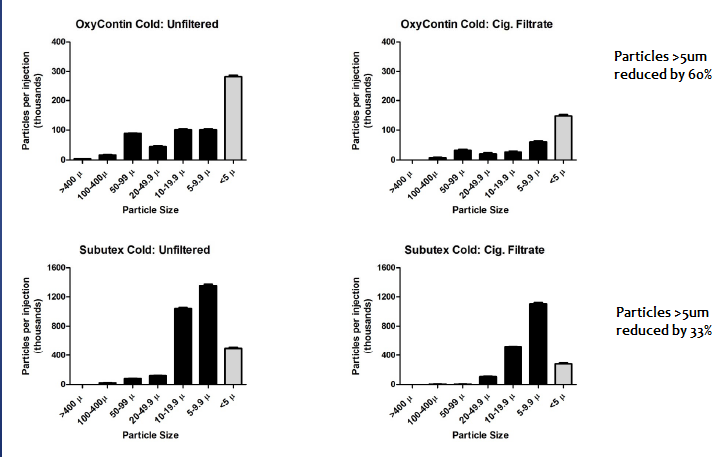dhopeless
Bluelighter
Anyone who shoots anything (especially pills) and is concerned about maintaining good health will invest in some micron filtering supplies. When I first started shooting my tex's I would only do it if processed correctly through a wheel filter. The very first time I shot tex I did not have one, and used a bit of ingenuity and I 'invented' the "syringe filter" (haha...). I stuffed wet cotton down a rig until it was stuffed to 20 units, pulled off the tip with pliers, and then pushed the solution through. It went from being a crude solution not worthy of injection with particles floating in the barrel that I could see settle into a crystal clear, much more shootable (looking) solution. I found out via Bluelight that I'm not the first one to do this.
A few months ago I spent a ton of money on micron filters, huge syringes, vials, the whole 9 yards and turned a good portion of my script into an injectable form of bupe. A month later I had no clean wheel filters, was hooked on the needle, and broke. So I started back-loading again to filter. I KNOW it makes it MUCH better--about 50% is my guess based on a little experiment I did:
A subutex weighs 400 mgs. Roxane, Reckitt, Teva. All the same weight. I dissolved one and did my usual back-loading procedures. Then I let the solution evaporate in a spoon, scraped it out, and weighed it. It weighed out to roughly 200 mgs. So it would seem that I got half of the crap out. When I do this, I can leave a pre-made shot sitting around forever and NEVER see any particles settle. So what seems to be left in the mix seems to be somewhat water soluble. Which is weird, cause I've done hundreds of hours researching what's in tex, what's water soluble, and what's not. And the answer *seemed* to be that only the buprenorphine was water soluble. So what did that evaporated water gloop consist of? Corn starch? Lactose? And how bad for you could it be? Do dissolved things in solutions tend to not wreck as much havoc as free particles? Yes. But by how much less?
What I want to know in this thread is:
-Who else using this method (particularly with subutex tablets)
-What their thoughts are on safetly vs plain cotton vs micron
-Health problems they have or haven't noticed since starting or stopping doing this
-Technique improvements are welcome
-What is the crap that makes it through, and *if it isn't soluble in water, WHY DOESN'T IT SETTLE*?
Please, shed some bluelight.
A few months ago I spent a ton of money on micron filters, huge syringes, vials, the whole 9 yards and turned a good portion of my script into an injectable form of bupe. A month later I had no clean wheel filters, was hooked on the needle, and broke. So I started back-loading again to filter. I KNOW it makes it MUCH better--about 50% is my guess based on a little experiment I did:
A subutex weighs 400 mgs. Roxane, Reckitt, Teva. All the same weight. I dissolved one and did my usual back-loading procedures. Then I let the solution evaporate in a spoon, scraped it out, and weighed it. It weighed out to roughly 200 mgs. So it would seem that I got half of the crap out. When I do this, I can leave a pre-made shot sitting around forever and NEVER see any particles settle. So what seems to be left in the mix seems to be somewhat water soluble. Which is weird, cause I've done hundreds of hours researching what's in tex, what's water soluble, and what's not. And the answer *seemed* to be that only the buprenorphine was water soluble. So what did that evaporated water gloop consist of? Corn starch? Lactose? And how bad for you could it be? Do dissolved things in solutions tend to not wreck as much havoc as free particles? Yes. But by how much less?
What I want to know in this thread is:
-Who else using this method (particularly with subutex tablets)
-What their thoughts are on safetly vs plain cotton vs micron
-Health problems they have or haven't noticed since starting or stopping doing this
-Technique improvements are welcome
-What is the crap that makes it through, and *if it isn't soluble in water, WHY DOESN'T IT SETTLE*?
Please, shed some bluelight.





